You did it. You studied the models, talked to friends, dug into online forums and picked the handgun you liked the best, found a deal you liked and now have joined the ranks of men.
Now what?

In some ways you can read this as a companion piece to Quizzer’s. Except while he was a flippant gadfly, I’m seriously serious. Seriously.
Ahem.
First, read the damn manual. This isn’t a child’s toy, or a consumer electronic device, where you can just fumble around until you get the hang of it or take it in for a refund because you claim it just “stopped working” with a straight face and the low wage worker stares at you with dead eyes for someone so young and gives you an exchange. Read the manual.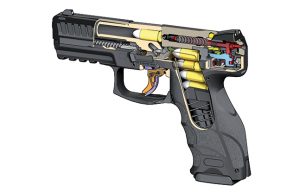
Second, know how your handgun operates. Since you read the manual, you should know to load and unload your handgun safely. You should know what safety features are on it and how to take it from safe to ready-to-fire. If you want to learn how to field strip your handgun, now would be a good time.
Third, know the Rules. See here: http://concealednation.org/2013/11/the-4-rules-of-gun-safety/
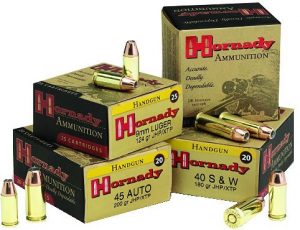 Fourth, have enough ammo. You did buy the proper ammo for your handgun when you bought it, right? If not, buy some today. It won’t do you any good without ammo. How much should you buy? For a new handgun, as much as you can. Your goal should be to have a 1,000 rounds on hand, but you can build up to that. Already bought some? Good! Buy more. You’ll go through it a lot quicker than you think. Also, buy more ammo. Buy mostly average stuff for now. Don’t worry about the high-end personal defense rounds yet, because right now, you suck. And that’s okay.
Fourth, have enough ammo. You did buy the proper ammo for your handgun when you bought it, right? If not, buy some today. It won’t do you any good without ammo. How much should you buy? For a new handgun, as much as you can. Your goal should be to have a 1,000 rounds on hand, but you can build up to that. Already bought some? Good! Buy more. You’ll go through it a lot quicker than you think. Also, buy more ammo. Buy mostly average stuff for now. Don’t worry about the high-end personal defense rounds yet, because right now, you suck. And that’s okay.
Fifth, find a gun range near you. It doesn’t have to be fancy, but you want to look for places that will support you and your time practicing through an environment that helps you. Sufficient lighting and ventilation at the indoor ranges. Proper safety checks for indoor or outdoor ranges. If you choose to find open land, make sure that land does NOT prohibit firearms from being discharged and that there is a big, and empty of people, backstop behind your targets. An indoor range is good for beginners. One main advantage a lot of them have is adjustable target distances so you aren’t saying “Dude, I was hitting the target at what must have been 50 yards!” when really you’re at 8 yards and the one time you hit it was mostly by accident. You can buy ammo at most indoor ranges, but it’s usually a little more expensive, but sometimes people forget to buy ammo before hand and are forced to do at the range. But you have ammo, don’t you, because you listened to me, right? Right. Buy ammo.
Sixth, practice. None of what I mentioned before will do you a lick of good unless you haul your newb self down to the range. Take a buddy if you can. Someone with experience in firearms is best, of course, but for whatever his skill level, make sure you trust him not to do something stupid. Most ranges I have used have a helpful staff on hand that do not judge. Oh sure, you’ll run into the firearms equivalent of the Comic Book Guy now and then. Ignore them. Put in the time to know how your handgun operates. Don’t get caught up too much on being accurate, right now just focus on shooting correctly. There are two major upright stances, the Isosceles and the Weaver. Either one will do, find the one you are most comfortable with for now. Focus on your grip, lining up the sights, breathing, and squeezing the trigger. It’s ok when you suck. No big deal. There are no grades at the range, so you can work on different aspects and be fine. Just remember the Rules and follow the range rules.
Seventh, know how to clean and maintain your handgun. Remember the first step? Break out that manual and read how to 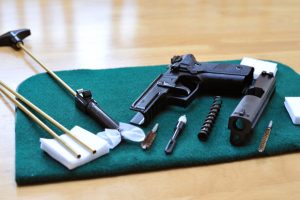 take care of your handgun. After the range, get in the habit of checking out and cleaning up your firearm. Make sure nothing looks amiss. Modern handguns can take a tremendous amount of stress, but no product is 100% free from all errors and defects. But don’t stress, either. Just a quick visual inspection is all that’s needed most of the time. If you aren’t sure, or think there’s a problem, have it checked out by a competent gunsmith. Ranges sometimes have one on site, or they can recommend a local. Really, though, for the vast majority of modern firearms it will never be a concern.
take care of your handgun. After the range, get in the habit of checking out and cleaning up your firearm. Make sure nothing looks amiss. Modern handguns can take a tremendous amount of stress, but no product is 100% free from all errors and defects. But don’t stress, either. Just a quick visual inspection is all that’s needed most of the time. If you aren’t sure, or think there’s a problem, have it checked out by a competent gunsmith. Ranges sometimes have one on site, or they can recommend a local. Really, though, for the vast majority of modern firearms it will never be a concern.
Eight, store the handgun in compliance with local laws and according to your comfort level. Some people will do the bare minimum and others will have it in a bio-metric safe inside a bigger safe behind a locked door, guarded by trained alligators and frickin’ lasers. I’m not saying which way is right, you’ll have to judge for yourself. But remember, you are responsible for the handgun inside your house.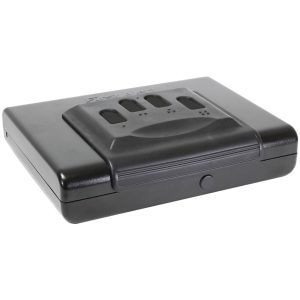
Ninth, have fun! If you aren’t having fun, relax. Yes, you are wielding a bullet hose of massive destruction that can shoot through car engine blocks at 2,000 yards, so you need to treat your handgun with respect, but have fun!
Tenth, did I mention to buy ammo? If you had fun at the range, which you did, you’re low already so time to stock up again before your next trip.
Sound off in the comments on what else newbies should know.
So you bought your first handgun, now what?
18 Comments
Leave a Reply
Latest from Firearms

The Weimar Years – Part 5
Summary of the German Revolution, 1918-1919.
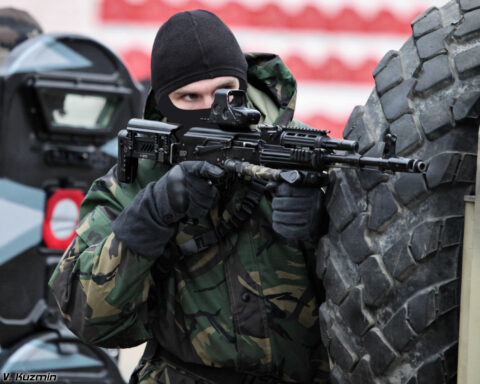
Ukraine, NATO, and the End of the Postwar Order
Russia is massing troops on the Ukrainian border. America is threatening sanctions or worse. Britain warns of war, while Germany wants peace. Is the post-WWII geopolitical order crumbling? Will Russia always be

The Commies Are Coming
The Commiecrats in congress have shifted their focus to gun grabbing. As they are writing their bill, and just a few days after a Colorado judge shot down a case that would
Molon Labe
Come and take it, you commie bastards.

One Night in San Antone: Ben Thompson (Part 2)
In the period now beginning, Ben drank more heavily than ever. He became a common nuisance to both his friends and his enemies; particularly perhaps, to his friends. Even his most indulgent



Excellent. I would add, it’s a great stress reliever. Also, find other gun enthusiasts and network. They’re often a great source of knowledge and advice, and, if you get in with the right people, you’ll find yourself Invited on camping trips to shoot pistols and rifles in the California desert with right-wing law enforcement and military veterans and drink beer. Good times.
Save your fired brass, you can use it or give it to friends at some point.
Make a friend who reloads, get them to show you the ropes and get you started.
Reloading saves a good bit of cash and is a very relaxing hobby for many folks.
I’m a relative newb. Don’t be afraid to ask questions when out shooting. I’ve watched people go to my local range, fill out the forms, sit through the required video, and then enter the shooting bay, empty a magazine, and then struggle with reloading.
Most guys at the range are more than willing to help. Like 99.999% of them.
Ask questions, please.
Practice, practice, practice.
Develop muscle memory and as you advance in range stationary target skills, consider taking some advanced training shooting in different, challenging environments. Should the time come that you may have to defend yourself, it needs to happen with a minimal amount of extraneous thought.
I agree 100%
Drills and printable targets at pistol-training.com
Awesome. Thank you!
As a corollary to “buy ammo”, also buy magazines – not the kind you read, the kind you load. It is also one of the things you can “build up to.”
Excellent point. Have at least two for every firearm and build from there.
Good post.
You never even mentioned caliber. I’ll fight the “.40” crowd. I have a “‘4 inc, and a “6 inch .357 Mag.
I’ve shot many hogs, and a few deer with my 6 inch Taurus. No scope necessary.
It has some power.
For most of us on this site, we have quite a few options available to us. On any given day, I might carry a .357 wheel gun, a Sig 9mm, a .45 ACP, a .380, a S&W 9mm. Well, you get the point. I could keep going.
Having said that, I really, really like the .40, but I don’t really want to invest in another size ammo, so I just go with 9mm or .45 ACP when I am getting a new one.
Caliber is a personal issue. Some shooters can’t handle the bigger calibers, some can.
I recommend shooting as many handguns as the new shooter can before making any choice.
One more thing – get some training by qualified instuctors. You paid for a firearm and ammo, spend some more and get the training!
Not everyone can afford the time or costs, but if it’s within your means, do it!
Take a class. I am 41 and bought my 1st handgun, a S&W MP 9MM Full size with CT 360 Lasergrips. The thing is as cool as it sounds. I took a $60 introductory handgun class, to learn how to stand and grip (improved my accuracy immensely). I paid for a class, because that way I felt free to ask stupid questions (why is there no safety?). In May I am going to take a “tactical” class ($135) that will qualify for a concealed carry permit, also to learn the basics for navigating through potential situations.
Prepare to spend about the cost of the gun to get outfitted. For target ammo, I have learned to watch sales and look to buy at around 25 cents a round, I buy 1000 rounds at a time. You will need a decent safe if you have kids, I bought a $150 biometric (fingerprint) safe that works just fine. A pair of earmuffs for the range $35, and a $25 cleaning kit. Range time costs $25-$35 per trip, although I have heard outdoor ranges are much cheaper.
Back to the ammo, I use the cheap “FMJ” rounds for shooting, and then more expensive rounds that I keep it loaded with in the safe.
All excellent suggestions. Thank you!
Don’t forget to practice with the more expensive rounds now and then. The ballistics and handling do change, if only by a little, but practice will smooth out any surprises.
Depending on your State, there often time is BLM land that allows for firearms to be discharged. Check into your State BLM information and see if that’s an option.
[…] So you bought your first handgun, now what? – Men Of The West – You did it. You studied the models, talked to friends, dug into online forums and picked the handgun you liked the best, found a deal you liked and now have joined. […]